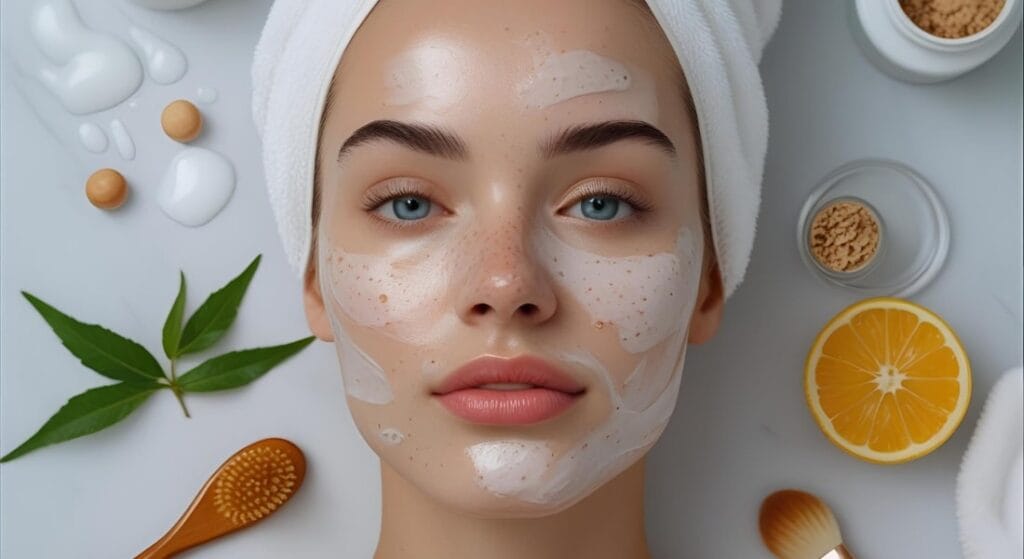Dealing with acne-prone skin can feel like a constant battle. From unexpected breakouts and persistent oiliness to the frustrating aftermath of marks and scars, finding a solution that actually works can be overwhelming. You may have tried countless products with little success, leaving you feeling discouraged. But what if the key isn’t a single “miracle” product, but a consistent, well-structured skincare routine? A dedicated skincare routine for acne-prone skin is your most powerful tool for managing breakouts, controlling excess oil, and achieving a clearer, healthier complexion. It’s about using the right products in the right order to cleanse, treat, hydrate, and protect your skin barrier. At Aakaar Medical Technologies, we believe in a science-backed approach to skincare. This comprehensive guide will walk you through the essential steps, dermatologist-recommended ingredients, and lifestyle changes to help you build an effective daily routine and reclaim control over your skin.
Understanding Acne-Prone Skin: Beyond the Surface
Before building a routine, it’s crucial to understand what makes skin “acne-prone.” This skin type is characterized by a higher tendency to develop comedones (blackheads and whiteheads) and pimples (pustules and papules). But what’s happening beneath the surface?
The Four Main Culprits of Acne
Acne is a complex inflammatory condition, but it’s typically triggered by a combination of four key factors:
- Excess Sebum (Oil) Production: Your sebaceous glands produce an oily substance called sebum. While sebum is essential for keeping skin lubricated, overproduction can lead to greasy skin and clogged pores.
- Clogged Pores: When excess oil mixes with dead skin cells, it can form a plug that clogs your hair follicles (pores). This creates the perfect environment for blackheads and whiteheads.
- Bacterial Growth: The bacterium Cutibacterium acnes (formerly Propionibacterium acnes) lives naturally on our skin. When a pore is clogged, these bacteria can multiply rapidly, leading to inflammation.
- Inflammation: The body’s immune response to the bacterial overgrowth causes the redness, swelling, and pain associated with inflammatory acne like pimples and cysts.
Acne Myths vs. Facts
Navigating acne care is often clouded by misinformation. Let’s clear up some common myths:
- Myth: You should wash your face multiple times a day to control oil.
Fact: Over-cleansing can strip your skin of its natural oils, causing it to produce even more oil to compensate, leading to more breakouts. Gentle, twice-daily cleansing is ideal. - Myth: Greasy foods and chocolate directly cause acne.
Fact: While a balanced diet is important, the link between specific foods like chocolate and acne is weak. However, high-glycemic foods (sugary snacks, white bread) may influence hormones that trigger acne in some individuals. - Myth: You can scrub away acne.
Fact: Harsh physical scrubs can irritate inflamed skin, damage the skin barrier, and worsen acne. Chemical exfoliation is a much safer and more effective approach.
The Core Steps for Acne Skincare: Your Dermatologist-Recommended Routine
A successful daily routine for acne-prone skin is built on five core pillars: Cleansing, Hydrating, Protecting, Treating, and Exfoliating. 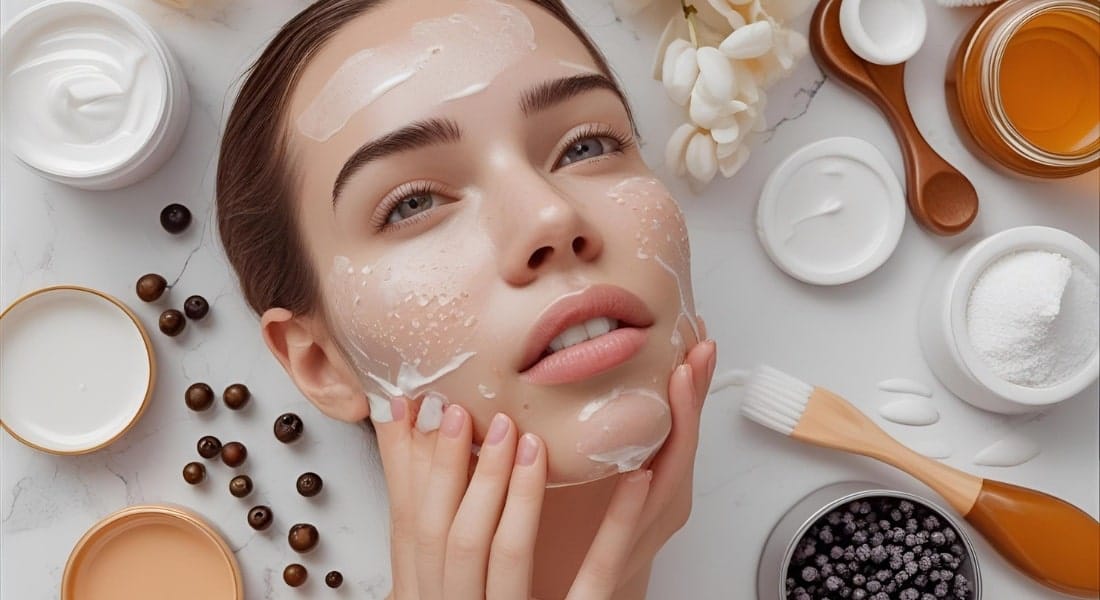
Step 1: Gentle Cleansing – The Foundation of Clear Skin
Cleansing is the non-negotiable first step to remove dirt, excess oil, and impurities that clog pores. For acne-prone skin, the key is to be effective without being harsh. A cleanser that strips the skin can compromise its protective barrier, leading to irritation and increased breakouts. Look for a gentle, pH-balanced cleanser formulated specifically for oily and acne-prone skin. Ingredients like Salicylic Acid are excellent because they can exfoliate inside the pore lining, helping to clear out congestion. Our Recommendation: We recommend TUBELiTE akneklenz, a scientifically formulated face wash designed for deep pore cleansing. It effectively removes excess oil and surface impurities while being gentle on the skin, making it the perfect start to your morning and evening routines.
Step 2: Hydration & Moisturization – Yes, Your Oily Skin Needs It!
One of the biggest mistakes people with acne-prone skin make is skipping moisturizer, fearing it will make their skin greasier. In reality, hydrating skincare for acne-prone skin is essential. When your skin is dehydrated, it can overcompensate by producing more oil, which can lead to more clogged pores. The secret is to choose the right kind of moisturizer: one that is lightweight, oil-free, and non-comedogenic (meaning it won’t clog pores). Hydrated skin is balanced skin, which is less likely to become inflamed. Our Recommendation: aknehydrate is an ideal moisturizer for oily and acne-prone skin. This lightweight, non-greasy formula provides long-lasting hydration without blocking pores. It helps to restore the skin’s natural moisture balance, leaving it feeling soft and supple, not sticky.
Step 3: Sun Protection – Your Non-Negotiable Shield
Sunscreen is arguably the most important step in any skincare routine, but it’s especially critical for acne-prone skin. Sun exposure can:
- Worsen Inflammation: UV rays can increase redness and inflammation, making active breakouts look worse.
- Cause Post-Inflammatory Hyperpigmentation (PIH): Those dark spots left behind after a pimple heals are PIH. Sun exposure darkens these spots and makes them last longer.
- Weaken the Skin Barrier: Sun damage compromises your skin’s ability to heal and defend itself.
Choose a broad-spectrum sunscreen with at least SPF 30. Look for formulas labeled “oil-free” and “non-comedogenic” to ensure they won’t contribute to breakouts. Our Recommendation: akneskreen is a broad-spectrum, silicone-based sunscreen specifically developed for acne-prone and oily skin. Its gel-based, non-comedogenic formula provides superior sun protection without leaving a greasy residue, making it comfortable for daily use.
Step 4: Targeted Treatment – The Power of Active Ingredients
This is the step where you actively fight existing acne and prevent new breakouts from forming. Treatment products contain active ingredients that target the root causes of acne. Key ingredients to look for include:
- Salicylic Acid (BHA): An oil-soluble exfoliant that penetrates deep into pores to dissolve oil and dead skin cells.
- Niacinamide: A form of vitamin B3 that helps regulate oil production, reduce inflammation and redness, and improve the appearance of pores.
- Retinoids: Vitamin A derivatives that increase skin cell turnover, preventing pores from becoming clogged. They are highly effective for both inflammatory acne and comedones.
Our Recommendation: To effectively target stubborn acne, we suggest etrelume Acnecidol Exo. This advanced formula is designed to reduce active acne lesions, control sebum production, and prevent future breakouts. Its potent yet balanced composition makes it a cornerstone of an effective treatment plan.
Step 5: Advanced Care – Professional Exfoliation with Peels
While gentle daily care is crucial, sometimes your skin needs a professional boost, especially when dealing with stubborn acne and leftover scars. Chemical peels are a form of controlled exfoliation performed in a clinical setting that goes deeper than at-home products. Peels use acids to remove the outermost layer of dead skin, unclogging pores, reducing inflammation, and stimulating cell renewal. This process can significantly improve active acne, fade products for pimples and acne scars, and enhance overall skin texture. Our Recommendation: The Black Peel is a revolutionary clinical treatment ideal for acne-prone skin. Based on Black Acetic Acid, it has remarkable comedolytic, antibacterial, and anti-inflammatory properties. A series of Black Peel sessions administered by a dermatologist can dramatically reduce acne, control oil, and improve the appearance of scarring, offering results you can’t achieve with daily products alone.
Your Daily Routine for Acne-Prone Skin: A Step-by-Step Guide
Consistency is everything. Here is a sample oily skin routine you can follow using the principles and products discussed. 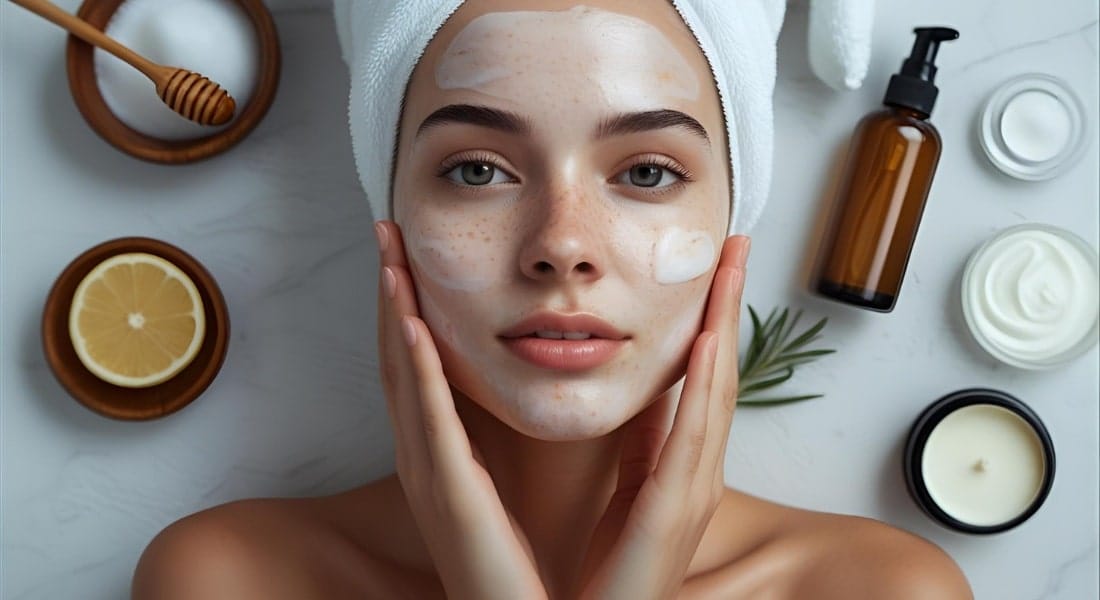
Morning (AM) Routine
The goal of the morning routine is to cleanse, hydrate, and protect your skin for the day ahead.
- Step 1: Cleanse: Wash your face with a gentle cleanser like TUBELiTE akneklenz to remove oil and impurities that built up overnight. Pat your skin dry with a clean towel.
- Step 2: Hydrate: Apply a lightweight, non-comedogenic moisturizer like aknehydrate to balance your skin’s moisture levels.
- Step 3: Protect: Generously apply a broad-spectrum sunscreen like akneskreen as the final step. This is non-negotiable, even on cloudy days.
Evening (PM) Routine
The evening is the best time to treat your skin, as it repairs itself while you sleep.
- Step 1: Cleanse: Wash your face thoroughly with TUBELiTE akneklenz to remove sunscreen, makeup, dirt, and oil from the day.
- Step 2: Treat: Apply your targeted acne treatment, such as etrelume Acnecidol Exo, to clean, dry skin. Focus on areas prone to breakouts. Allow it to fully absorb.
- Step 3: Hydrate: Finish with your moisturizer, aknehydrate, to soothe and hydrate your skin overnight.
Beyond Products: How to Treat Acne Naturally with Lifestyle Changes
While the right acne skincare products are vital, your lifestyle also plays a significant role in managing acne.
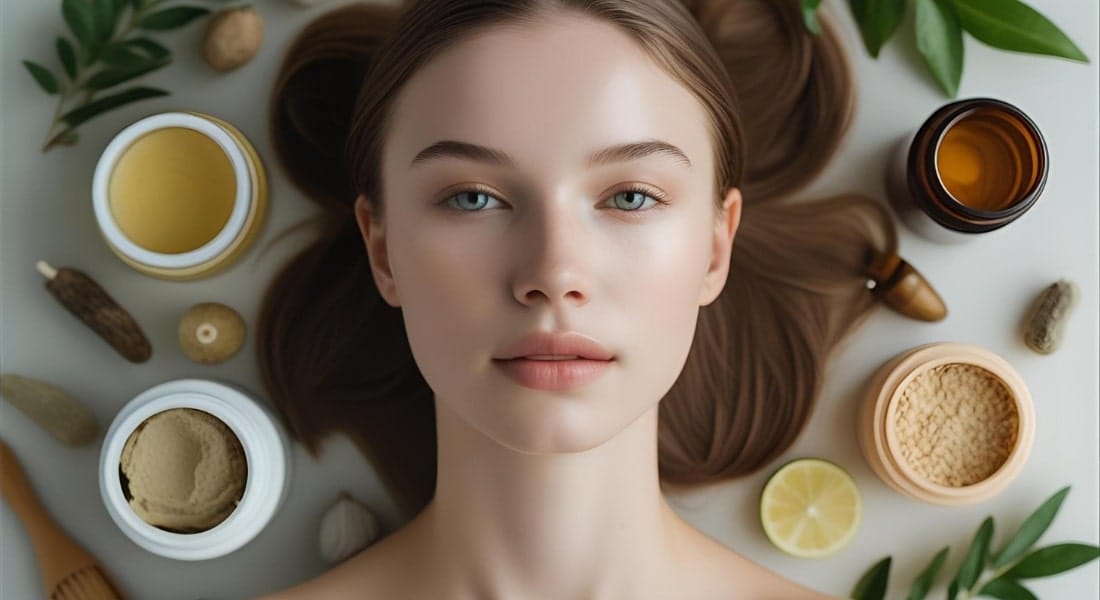
- Diet: Focus on a balanced diet rich in whole foods, fruits, and vegetables. Some studies suggest that high-glycemic foods and dairy can trigger acne in susceptible individuals. Pay attention to your body and see if certain foods correlate with your breakouts.
- Hydration: Drink plenty of water throughout the day to keep your skin hydrated from the inside out.
- Stress Management: Stress increases cortisol levels, a hormone that can trigger excess oil production. Incorporate stress-reducing activities like yoga, meditation, or exercise into your life.
- Sleep: Aim for 7-9 hours of quality sleep per night. Sleep is when your body repairs itself, including your skin.
- Hygiene: Change your pillowcases regularly, clean your phone screen often, and avoid touching your face to prevent transferring bacteria and oil to your skin.
Common Mistakes to Avoid in Your Acne Skincare Journey
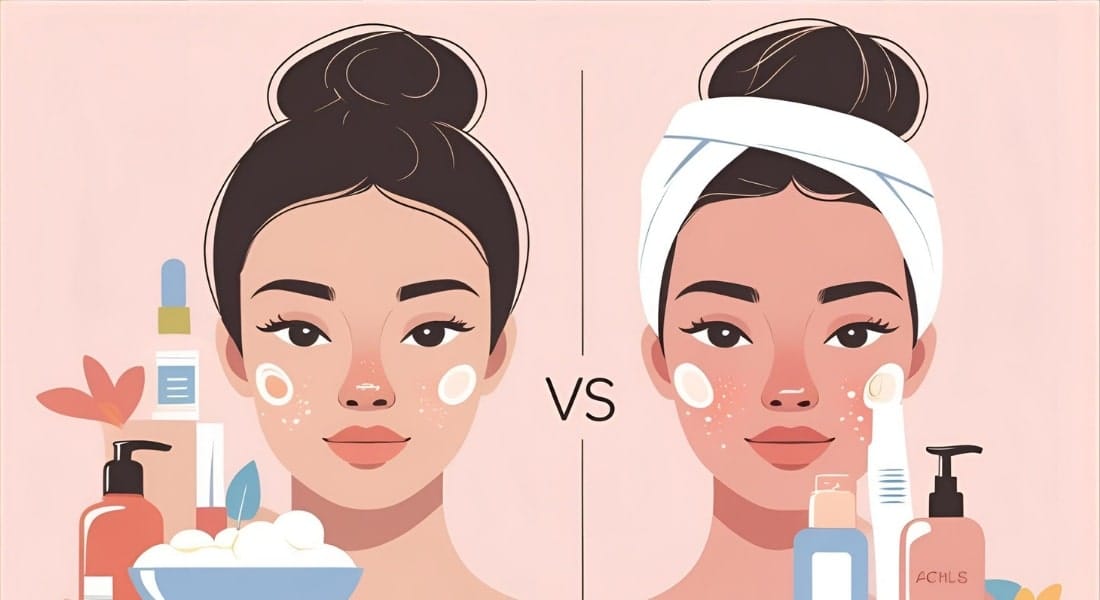
- Over-Cleansing or Over-Exfoliating: This can strip the skin barrier, leading to irritation and more acne. Stick to cleansing twice a day and follow your dermatologist’s advice on exfoliation.
- Using Harsh Scrubs: Abrasive physical scrubs can create micro-tears in the skin and spread bacteria.
- Skipping Moisturizer and Sunscreen: These are essential protective steps that help your skin heal and prevent further damage.
- Picking or Squeezing Pimples: This can push bacteria deeper into the skin, leading to more severe inflammation, infection, and permanent scarring.
- Being Inconsistent: It takes time for a skincare routine to work. Give your new regimen at least 4-6 weeks before expecting to see significant results.
Frequently Asked Questions (FAQs)
Q1: What is the best skincare routine for acne-prone skin?
A: The best routine is simple, consistent, and targeted. It should include a gentle cleanser, a non-comedogenic moisturizer, a broad-spectrum sunscreen in the morning, and a targeted acne treatment at night. The core steps are: Cleanse -> Hydrate -> Protect (AM) and Cleanse -> Treat -> Hydrate (PM).
Q2: Can moisturizers cause more pimples?
A: The wrong moisturizer can. Heavy, oil-based, or comedogenic formulas can clog pores. However, a lightweight, oil-free, and non-comedogenic moisturizer is essential for acne-prone skin. It helps balance oil production and supports a healthy skin barrier, which can actually help reduce pimples.
Q3: Is sunscreen safe for oily skin?
A: Absolutely! In fact, it’s crucial. The key is to choose a formula designed for oily or acne-prone skin. Look for sunscreens that are oil-free, non-comedogenic, and have a lightweight gel or fluid texture, like akneskreen, to avoid a greasy feel and prevent clogged pores.
Q4: How often should I exfoliate if I have acne?
A: This depends on the type of exfoliation. Over-the-counter chemical exfoliants (like those in cleansers) can be used daily if they are gentle. However, for more intensive treatments or peels, it’s best to consult a dermatologist. Over-exfoliation can cause severe irritation.
Q5: Can professional peels like the Black Peel help with acne scars?
A: Yes. Professional chemical peels are one of the most effective treatments for acne scars, particularly the dark spots (post-inflammatory hyperpigmentation) and textural changes left behind. The Black Peel helps to accelerate cell turnover and remodel collagen, which gradually fades scars and smooths the skin’s surface over a series of treatments.
Conclusion: Your Path to Clearer, Healthier Skin
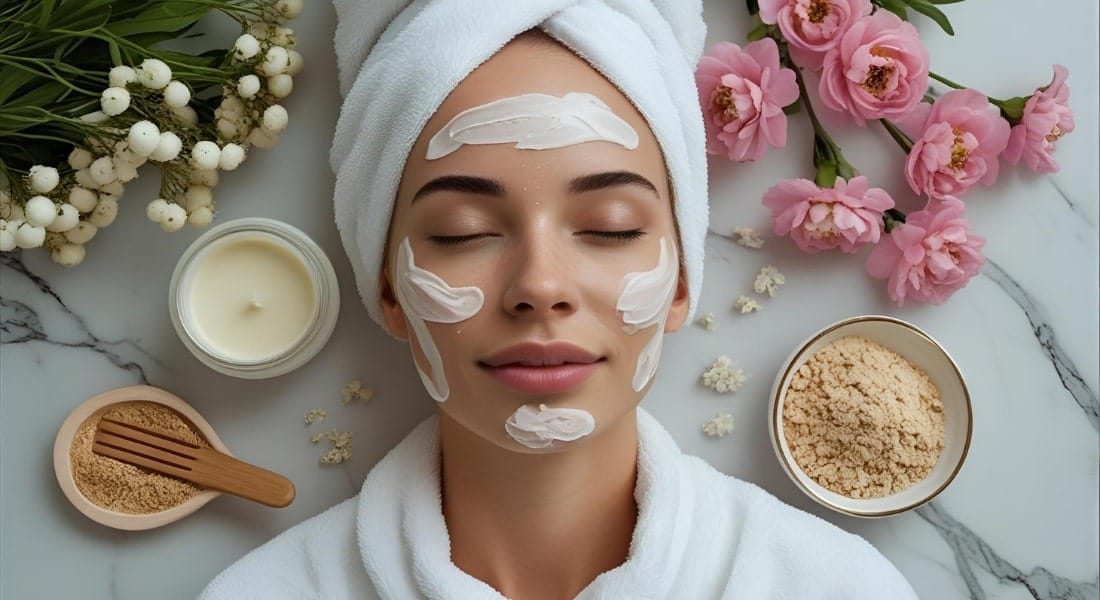
Building an effective skincare routine for acne-prone skin is a journey of consistency and patience. By understanding the needs of your skin and embracing a structured approach with scientifically-backed products, you can significantly reduce breakouts, control shine, and improve your overall skin health. Remember that clear skin doesn’t happen overnight. Stick with your routine, make healthy lifestyle choices, and don’t be afraid to seek professional help. If your acne is persistent or severe, consulting a dermatologist is the best course of action. They can provide a personalized treatment plan, which may include professional procedures like the Black Peel. Ready to start your journey to clearer skin? Explore our range of dermatologist-recommended products designed specifically for your needs.
- For Cleansing: [TUBELiTE akneklenz]
- For Hydration: [aknehydrate]
- For Sun Protection: [akneskreen]
- For Targeted Treatment: [etrelume Acnecidol Exo]
- For Professional Care: Ask your dermatologist about the [Black Peel]
Take the first step today. Your skin will thank you for it.

